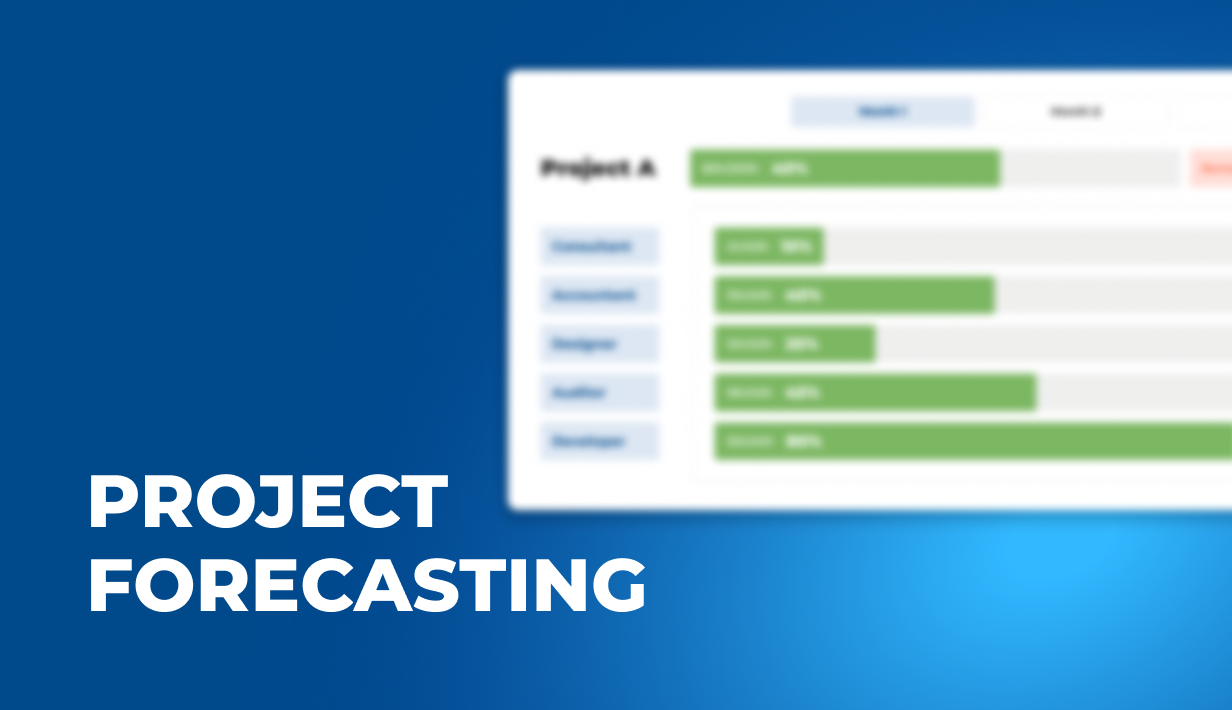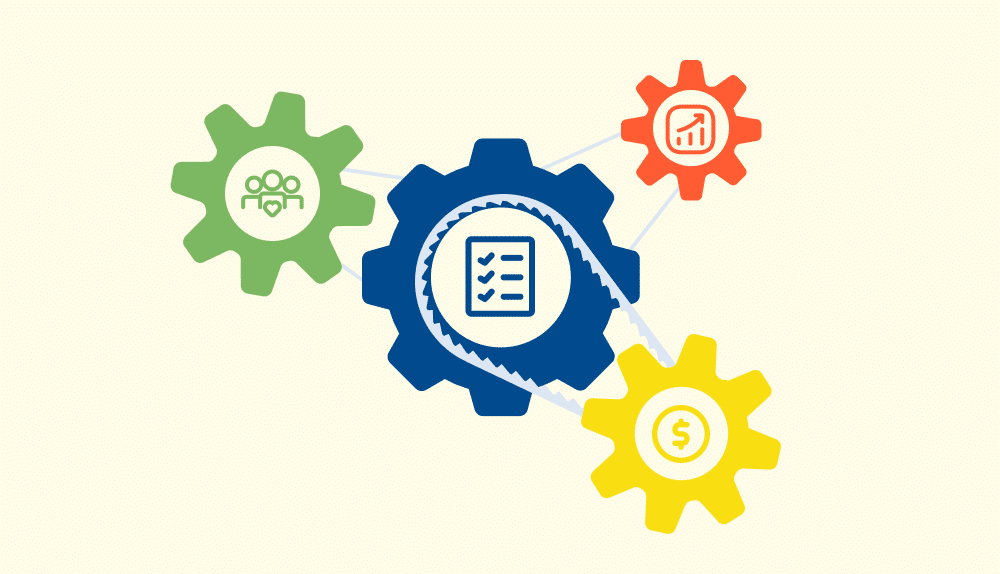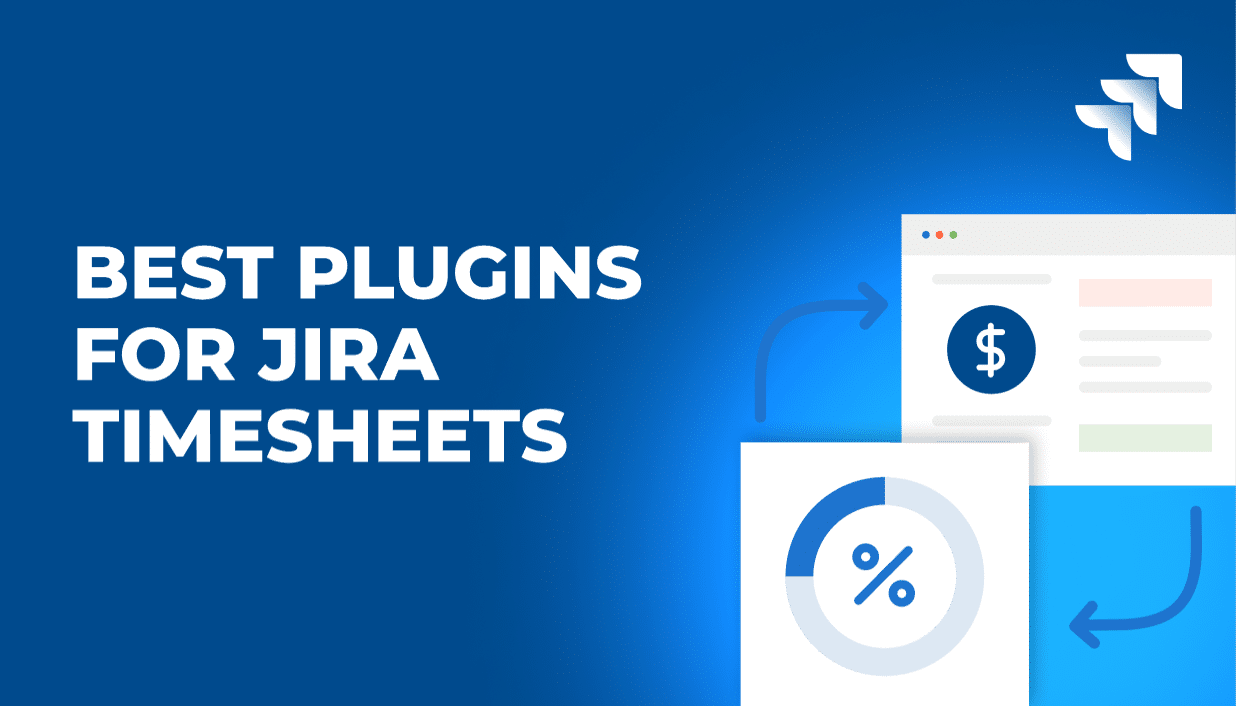Projects are rarely smooth sailing—scope creep, shifting priorities, and team dynamics can all steer plans off course. Yet, with effective project forecasting, managers can transform uncertainty into insight. By leveraging data and foresight, they can anticipate challenges, allocate resources wisely, and chart a clearer, more confident path to success.
In this article, you’ll find the answers to the following questions:
- What is project forecasting – and why is it important?
- What are the most popular project forecasting metrics?
- What project forecasting techniques should you use?
- How to chooose the right project forecasting method?
- What project forecasting software can help you manage this process?
What Is Project Forecasting for Project Management?
Project forecasting is the process of using current and historical data to predict the future outcomes of a project. It consists of combining timelines, costs, resource needs, and potential risks to help project managers make informed decisions and stay on track.
Why Is Project Forecasting Important?
Would you react to sudden obstacles differently if you knew you could encounter them? If you answered “yes” to this question, project forecasting could definitely improve the future performance of your project.
By identifying trends and anticipating challenges early, project forecasting enables project managers to adjust plans proactively. They can also adapt to any unforeseen changes more easily, as, during this process, they account for multiple possible scenarios. As a result, project forecasting improves the chances of delivering a successful project on time and within budget.
Additionally, other major processes can also benefit from project forecasting. In resource management, project managers can better assign tasks, prevent burnout, and avoid schedule conflicts by forecasting future workloads, especially when teams are juggling multiple projects. They can also predict project expenses with greater precision, improving profitability with proactive approach to revenue forecasting. As a result, project forecasting boosts project success rates, helping project managers lead with clarity and confidence.
Common Project Forecasting Metrics
There are three project forecasting metrics that should be included in all future forecasting efforts. Those include:
Budgets and Costs
All the commercial projects have the same goal: to be as profitable as possible. Therefore, it comes as no surprise that project cost management should be a backbone of any project forecasting process.
To ensure that your cost forecasting is as accurate as possible, combine budget information on present spending metrics and expenses from previous projects – preferably with a similar scope to the project you wish to forecast at the moment. Then, add project and company overheads to the equation to ensure that the final project outcomes won’t be affected by a sudden spike in external costs. By combining all of those factors, you can ensure that subpar income won’t overshadow overall project success.
Deliverables
To manage projects successfully, project managers need to start with their ultimate goals and then outline the steps that will lead to their completion. To do that, cooperate with other stakeholders, both within and outside your organization, to identify main project objectives, as well as individual project deliverables. Then, combine these conclusions with project timelines from similar operations to successfully identify possible risks and outcomes.
Time
Last but not least, try to determine project duration by turning the project’s landscape into accurate predictions. To forecast project timelines, identify the likely duration of each deliverable and, based on the information, calculate the overall duration of the project. Then, turn to past project for the information on possible obstacles, risks or constraints that could affect your plans, such as unpredictable resource availability, scope creep, and external factors. Based on your conclusions, add some time to the project plans to ensure their uninterrupted execution.
Project Management Forecasting Methods
While trend forecasting always has the same goal – creating accurate predictions for the future outcomes of the project – there are different ways to achieve this objective. These are some of the most popular of them.
Qualitative Techniques
Do you have a panel of experts that could help you forecast projects? Then qualitative techniques for project forecasting process are definitely a right choice for you.
Qualitative forecasting methods value expert opinions over historical data. In this forecasting models, project managers collect expert insights from all the relevant parties to determine the most widely agreed-upon predictions. There are two methods to achieve that:
Survey Method
The survey method involves distributing questionnaires or interview prompts to a group of knowledgeable stakeholders—such as project team members, clients, or subject matter experts. Their responses are then analyzed to identify common trends or consensus-based estimates. For that reason, this forecasting method works best when historical data is limited – for example, at the beginning of a brand-new type of project.
Delphi Technique
The Delphi technique takes the survey method a step further. In this techique, relevant experts respond to a series of questionnaires anonymously. After each round, a facilitator shares a summary of the findings, allowing participants to revise their answers based on the group’s feedback. The process continues until a consensus emerges.
While this echnique minimizes bias, encourages deeper thinking, and is especially useful for complex or high-uncertainty projects, it also have some disadvantages. Due to its iterative nature, it definitely arrives at the final conclusions at a slower pace,
Quantitative Techniques
Quantitative forecasting techniques rely on numerical data and statistical models to generate predictions. These methods are ideal for projects with well-documented histories or measurable variables such as cost, duration, and resource usage. Below are some of the most widely used quantitative methods:
Time Series Analysis
Time series analysis examines patterns in historical data over time, such as past project durations, budgets, or resource usage, to identify trends, seasonality, or recurring cycles. These insights are then projected into the future to create forecasts. This method is particularly useful for organizations managing recurring or similar types of projects.
Regression Analysis
Regression analysis explores the relationship between different project variables. For instance, a manager might use regression to predict project duration based on the number of team members or tasks. By identifying how one variable influences another, this method supports more accurate, data-driven forecasting models.
Break-even Analysis
Break-even analysis helps project managers determine when – and if – a project will start to generate value. It calculates the point at which total project costs equal the expected benefits or revenue. This technique is especially valuable in budgeting and strategic planning, where understanding financial thresholds is key to decision-making.
How to Choose The Right Project Forecasting Technique?
So many options to choose from… But which one is truly the best for your business?
The answer is: the one that matches the resources you already have at hand.
Before making a final decision, make sure that your final choice matches your capabilities and expectations. To do that:
- Verify what historical data your company collects, and check how detailed it is.
- Define the expected outcomes from the project forecasting process.
- Determine the degree of accuracy you expect from your project forecasts.
Answering those questions not only ensures that you will be able to create accurate forecasts using chosen method, but also helps you match it to your company’s real needs.
Project Forecasting: Best Practices
Successful project forecasting is not only about choosing the right methods and techniques; it also includes some battle-tested best practices that can streamline the process and make its outcomes much more precise. Here are a few of such tips!
Use Comprehensive and Accurate Data
Accurate project forecasting starts with accurate project data – both current and historical. By using information from similar projects as a baseline from validated sources, project managers can drastically improve the accuracy of their forecasts.
Forecast Regularly
Forecasting isn’t a one-and-done task. To stay relevant, forecasts need to be updated regularly, especially as new information, risks, or changes in scope emerge. Building a habit of revisiting forecasts at key project milestones or during recurring check-ins helps teams stay ahead of potential setbacks and make timely adjustments.
Include External Factors and Uncertainties
No project exists in a vacuum. Market shifts, staffing changes, supply chain disruptions, and client feedback can all influence timelines and budgets. Great forecasts account for these external variables by incorporating buffers, “what-if” scenarios, and risk-based assumptions, making the plan more resilient and adaptable.
Use Project Forecasting Tools
Creating forecasts for the entire project is not a piece of cake – especially with only basic tools at hand. Solutions such as spreadsheets or tables rarely provide managers with live updates, automated conclusions, and error notifications, increasing their chances for drawing incorrect conclusions. Project forecasting software can change that.
By providing a comprehensive overview of resource allocation, project budget, and project progress, project forecasting tools save manager’s time and prevent errors, providing all the interested parties with the latest data. Some of such systems – including BigTime – can also help companies test different scenarios, manage resource utilization and monitor performance metrics in seconds, making project forecasting a breeze.
Learn and Improve
Forecasting gets smarter with experience. After each project, compare your forecasted outcomes with actual results to identify what worked—and what didn’t. Use those lessons to fine-tune future forecasts, update your assumptions, and create stronger baselines. Over time, this continuous learning loop helps teams forecast with more confidence and accuracy.
Successful Projects Are Managed with BigTime
Team members, project tasks, resource allocation, project cost… There are dozens of factors project managers need to keep an eye on to ensure that the future project performance will exceed their (and their customers’) expectations. Fortunately, with BigTime’s state-of-the-art project management platforms, they can monitor all of those metrics – and more – without ever resorting to opening an Excel spreadsheet.
BigTime seamlessly bridges the gap between resources, finances and projects, providing project managers with:
- A complete overview of project planning, complete with skill management for project team and AI demand matching,
- Detailed project budget accounting for all the costs and overheads, not just hourly rates.
- Live updates to all the critical data – we’ll update your reports whenever your colleagues make an edit to the plans.
- AI-powered reports based both on the latest information about the project and historical data – the choice is yours!
The result? Achieving project success has never been easier.
Book a demo now or start a trial with BigTime to see how we can turn your data into accurate forecasts – and help you profit from them.




